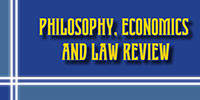Oleksandr KOSYCHENKO, Illia KLINYTSKYI
KOSYCHENKO O., KLINYTSKYI I. (2023), ANALYSIS OF INFORMATION SECURITY THREATS RELATED TO THE USE OF METADATA DOCUMENTS. PHILOSOPHY, ECONOMICS AND LAW REVIEW. Volume 3, no. 1, 152-161
DOI: 10.31733/2786-491X-2023-1-152-161
Abstract. The article deals with problems of a different nature that arise in any type of business activity with insufficient attention to the removal or concealment of the information contained in the metadata of various documents. Various types of documents that can contain metadata are considered, from office documents to media files. The content of metadata is analyzed, which, when accessed, can cause problems of a business, legal nature, can be used by criminals to commit financial and other crimes.
In addition, problems associated with the use of telecommunication services, such as e mail and various instant messengers, are analyzed. Some methods of deleting metadata using various types of application tools, both online services and specific programs for various operating systems, are described. It is concluded that the analysis of metadata has already become a daily practice for specialists in developed countries. Unfortunately, the issue of metadata security in Ukraine is still in an insufficient state.
Keywords: information, metadata, personal data, information security, fraud.
References
- Are Your Documents Leaking Sensitive Information? Scrub Your Metadata! Authors: Michael Spiegel. URL : https://er.educause.edu/blogs/2017/1/are-your-documents-leaking sensitive-information-scrub-your-metadat.
- Broughton, V., Hiom, D. & Dovey, J. (2019). User-centered metadata: A study of use and utility in digital libraries. Journal of Documentation, 75 (5), pp. 997-1015. Doi : https://doi.org/10.1108/JD-07-2018-0120.
- Dublin Core Metadata Initiative. (2012). Introduction to Dublin Core. URL : https://www.dublincore.org/specifications/dublin-core/dces/.
- Facebook. URL : https://www.facebook.com/business/help/952192354843755.
- Finn, B. (2022). How to Protect Yourself from Metadata. Global Investigative Journalism Network. By Reporters Without Borders. URL : https://gijn.org/2022/04/13/how-to protect-yourself-from-metadata/.
- Gutsalyuk, M., Havlovskyi, V. & Khakhanovskyi, V. et al. (2020). Vykorystannya elektronnykh (tsyfrovykh) dokaziv u kryminal’nomu provadzhenni : metod. [Use of electronic (digital) evidence in criminal proceedings: method.]. Ed. 2nd, add. Kyiv: Ed.- vo Nats. Acad. of Internal Affairs, 104 p. [in Ukr.].
- Holmes, H. Digital Asset Management. A Metadata Guide. URL : https://www.acquia.com/ blog/metadata.
- Introduction to Metadata. Third Edition. Edited by Murtha Baca. URL : https://www.getty.edu/publications/intrometadata.
- Is Metadata a Threat to Your Online Security? URL : https://fastestvpn.com/blog/is- metadata a-threat-to-your-online-security.
- Kosychenko O. & Rybalchenko, L. (2022) Peculiarities of using visual means of information and analytical acticiti in legal and law enforcement sphere. Philosophy, Economics and Law Review, 2 (1), pр. 162-169.
- Luther, D. (2022). What Is Metadata & Why Is It Important? Oracle netsuite, May, 19. URL : https://www.netsuite.com/portal/resource/articles/data-warehouse/metadata.shtml.
- Mateeva-Stoyanova, Z. (2020). Principles of personal data protection. Xüsusi buraxılış. Special Issue. Audit, 2 (28), pp. 95-104.
- Metadata in Digital Media. URL : https://sector035.nl/articles/metadata.
- Smirnov, S. Metadata: digital footprints that we (almost) don’t notice. URL : https://te st.org/2020/02/12/metadata/.
- Riley, J. (2017). Understanding metadata. Washington DC, United States: National Information Standards Organization, 23, pp. 7-10. URL : http://www.niso.org/publications/ press/UnderstandingMetadata.Pdf.
- Rybalchenko, L., Kosychenko, O. & Klinitskyi, I. (2022). Ensuring economic security of enterprises taking into account the peculiarities of information security. Philosophy, Economics and Law Review, 2 (1), pp. 96-102.
- Shaliyar, M. & Mustafa, K. (2022). Metadata Analysis of Web Images for Source Authentication in Online Social Media. In: Rushi Kumar, B., Ponnusamy, S., Giri, D., Thuraisingham, B., Clifton, C.W., Carminati, B. (eds) Mathematics and Computing. ICMC 2022. Springer Proceedings in Mathematics & Statistics, vol 415. Springer, Singapore. Doi : https://doi.org/10.1007/978-981-19-9307-7_7.
- Tallerås, K. H., Oltedal, S., Aalberg, T. & Liestøl, G. (2018). Metadata practices in museums and archives: The case of Norway. Journal of Documentation, 74 (4), pp. 812-827. URL : https://doi.org/10.1108/JD-07-2017-0091.
